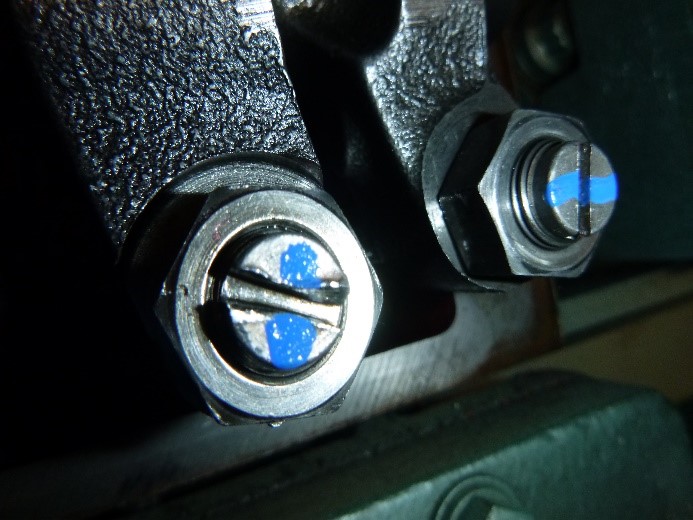We recently attended a land-based power generation engine – a Cummins KTTA50G to change three damaged injector push rods.
In completing this scope, the cause of the damage became apparent, and it’s something that’s easily preventable.
The full work scope was simple:
- Change injector pushrods (3 had snapped)
- Adjust valves and injectors
- Test run engine to ensure the engine stopped when switched off (the engine would previously run on after being switched off, sometimes for more than a minute)
The rocker gear for cylinders R1, R5 & R7 had been left loose in readiness, so the new pushrods were lubricated and fitted to the engine. We then fitted the rocker gear and torqued it down to OEM specs.
However, during the adjustment process for the valves and injectors, we found the injector adjusting screw on cylinder R1 extremely tight
So tight in fact that the tool slipped out of the slot in the adjusting screw and caused some damage to the slot on the top of the screw.

To rectify this, the rocker gear had to be removed from the engine so I could release the pressure on the screw, and once the screw had been unwound, the rocker gear was refitted and retorqued.
We checked all the other injector adjuster screws and found two more incredibly tight screws – the above process was repeated for these.
The adjuster screw for cylinder R1 needed to be unwound 6 turns to release the pressure.
When adjusting the injector, the screw was ‘chattering’ preventing an accurate reading from being taken on the torque wrench.
We removed the adjusting screw from the injector lever and checked the threads – no damage or other issues were found. The screw was swapped with the screw from injector R2 which eliminated the chattering when injector R2 was later adjusted.
When the replacement screw was adjusted in cylinder R1, the correct adjustment was reached after only 4¾ turns on the adjusting screw. Whilst there may be variations between different adjusting screws, there would not be sufficient manufacturing differences to account for an extra 1¼ turn on the adjusting screw.
The conclusion?
The injectors may have been incorrectly adjusted at some point in the past, and the extra strain on the injector operating mechanism may also have contributed to the breakage of the three injector pushrods. This incorrect adjustment would also affect the operation of the injectors and the timing of fuel injection.
The accepted wisdom is often that when tightening bolts, the tighter the better.
But without the correct tools or the ability to take accurate readings, this approach can and has led to issues.
The takeaway:


